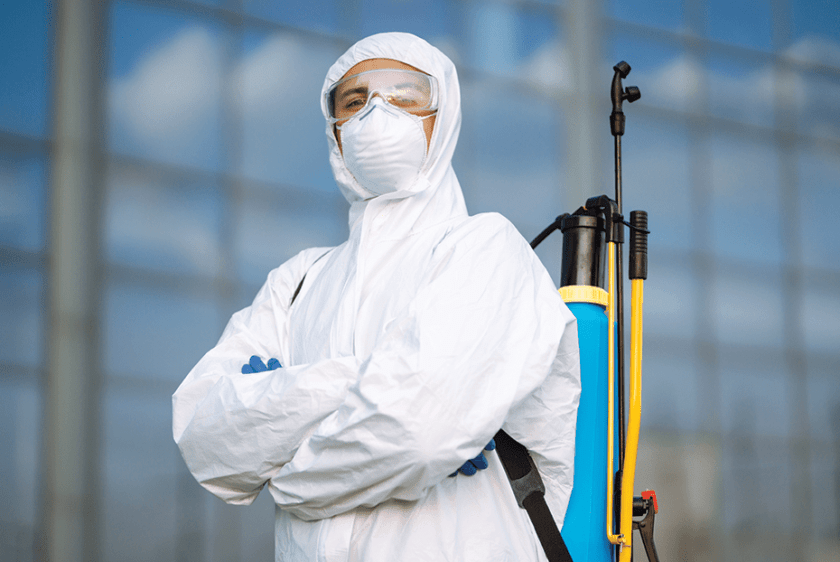Pest Control treatments covering residential and commercial properties.
Eco-Friendly Parasite Control Approaches for Taking Care Of Wildlife in Urban Locations
Urban locations commonly discover themselves at the crossway of human task and wild animals, leading to special difficulties in parasite management. These strategies not only protect the atmosphere but also improve community interaction in wild animals management. As city populations continue to expand, recognizing the dynamics of wildlife communications ends up being progressively important.
Comprehending Urban Wild Animals Characteristics
Comprehending Urban Wild animals Dynamics is important for creating reliable and green insect control strategies. Urban locations are significantly becoming environments for various wildlife varieties, driven by elements such as environment fragmentation, food schedule, and human encroachment. Recognizing these characteristics permits for a nuanced technique to pest administration that straightens with eco-friendly concepts.
Urban wildlife usually includes types such as raccoons, squirrels, and birds, which adapt to city environments, locating particular niches in eco-friendly areas, parks, and even suburbs. Their presence can result in conflicts with humans, especially when they manipulate human resources for food and sanctuary. Understanding the habits and environmental duties of these types informs strategies that reduce negative communications while promoting biodiversity.
Additionally, acknowledging the interdependencies within city communities assists in determining crucial locations for environment conservation and reconstruction. This expertise contributes to the development of incorporated bug management (IPM) methods that take into consideration the environmental equilibrium, thereby minimizing dependence on unsafe chemicals. By fostering conjunction in between people and urban wild animals, cities can develop healthier environments that profit both locals and local ecosystems, leading the way for lasting metropolitan living.
All-natural Repellents and Deterrents
All-natural repellents and deterrents use a sustainable choice to standard pest control approaches by using the power of nature to keep undesirable species away. These green services usually utilize plant-based active ingredients, necessary oils, and various other normally happening compounds that hinder bugs without damaging the environment.
One efficient natural repellent is peppermint oil, which is understood to fend off rats and pests. Its solid scent is unpleasant to many pests, making it a prominent option for metropolitan settings. In a similar way, vinegar and citrus peels can function as deterrents, as their solid odors are commonly unappealing to different wild animals.
Additionally, diatomaceous planet is an all-natural powder that can be spread in areas vulnerable to bug activity, efficiently drying out and hindering insects without posing dangers to non-target species. Additionally, garlic sprays and neem oil are acknowledged for their capacity to ward off a wide variety of pests, consisting of both insects and larger wildlife.
Implementing these natural repellents not just decreases dependence on chemical pesticides yet additionally advertises a much healthier metropolitan environment, fostering an extra balanced conjunction in between people and wild animals. By utilizing these techniques, metropolitan locations can effectively manage pest populaces while minimizing ecological influence.
Environment Alteration Techniques
Reliable environment alteration strategies play a critical function in sustainable insect administration by modifying the setting to make it much less favorable to pest problems. By understanding the environmental dynamics of urban locations, residential property proprietors can implement critical modifications that prevent parasites while advertising biodiversity.
(Organic pest control Port Charlotte)One primary technique involves keeping correct sanitation. This consists of routine waste elimination, protecting trash can, and getting rid of standing water to reduce breeding websites for pests and rodents. In addition, landscape design techniques such as choosing indigenous plants can enhance ecological equilibrium, offering environments for helpful organisms while decreasing sources for bugs.
An additional vital method is to secure entrance points in buildings. Evaluating and fixing cracks in structures, wall surfaces, and home windows can substantially reduce insect access. Moreover, developing physical barriers, such as fencings or plant buffers, can prevent wild animals activity into human-inhabited areas.
Integrated Insect Management Practices
Building upon environment adjustment techniques, integrated insect management (IPM) techniques offer a holistic approach to regulating insect populations while decreasing ecological effect. IPM incorporates various strategies, including biological, cultural, mechanical, and chemical controls, to attain efficient bug administration.
Organic control involves the introduction of all-natural killers or bloodsuckers to minimize parasite populaces. Cultural methods, such as plant rotation and cleanliness, interrupt pest life process and reduce their environments - Pest Control. Mechanical controls, like traps and barriers, give instant alleviation from insect stress without chemical intervention
Chemical controls are utilized as a last option, concentrating on targeted applications that limit injury to non-target species and the setting. The selection of eco-friendly chemicals, when essential, is indispensable to the IPM structure. Furthermore, keeping track of bug populations and evaluating possible damages aids educate decision-making, guaranteeing that interventions are timely and reliable.
Community Participation and Education And Learning

(Stable Fly Control)Workshops and informative sessions can gear up locals with understanding concerning indigenous species, environment conservation, and reliable safe parasite management techniques. Collaboration with colleges, local organizations, and government companies further improves instructional outreach, ensuring that vital details gets to diverse audiences.
Moreover, community-led efforts, such as neighborhood clean-up days and environment remediation projects, not just advertise biodiversity yet additionally reinforce area connections. Pest Control. By motivating citizens to share their experiences and observations, neighborhoods can develop targeted techniques that attend to certain regional insect issues
Including responses from citizens into insect administration plans enables check my reference an extra receptive and adaptive strategy to wild animals obstacles. Inevitably, educated and involved neighborhoods are key to achieving lasting success in environment-friendly bug control, resulting in healthier metropolitan atmospheres that appreciate both human and eco-friendly demands.

Verdict
Finally, environment-friendly bug control approaches offer lasting solutions for taking care of city wild animals. By prioritizing environment modification, making use of natural repellents, and applying incorporated bug administration methods, neighborhoods can cultivate a harmonious conjunction with local animals. Engaging homeowners via education enhances recognition and encourages accountable wild animals interactions. Ultimately, these strategies not only safeguard biodiversity but likewise promote ecological health and wellness, guaranteeing urban locations stay lively ecosystems where human beings and wild animals thrive with each other.